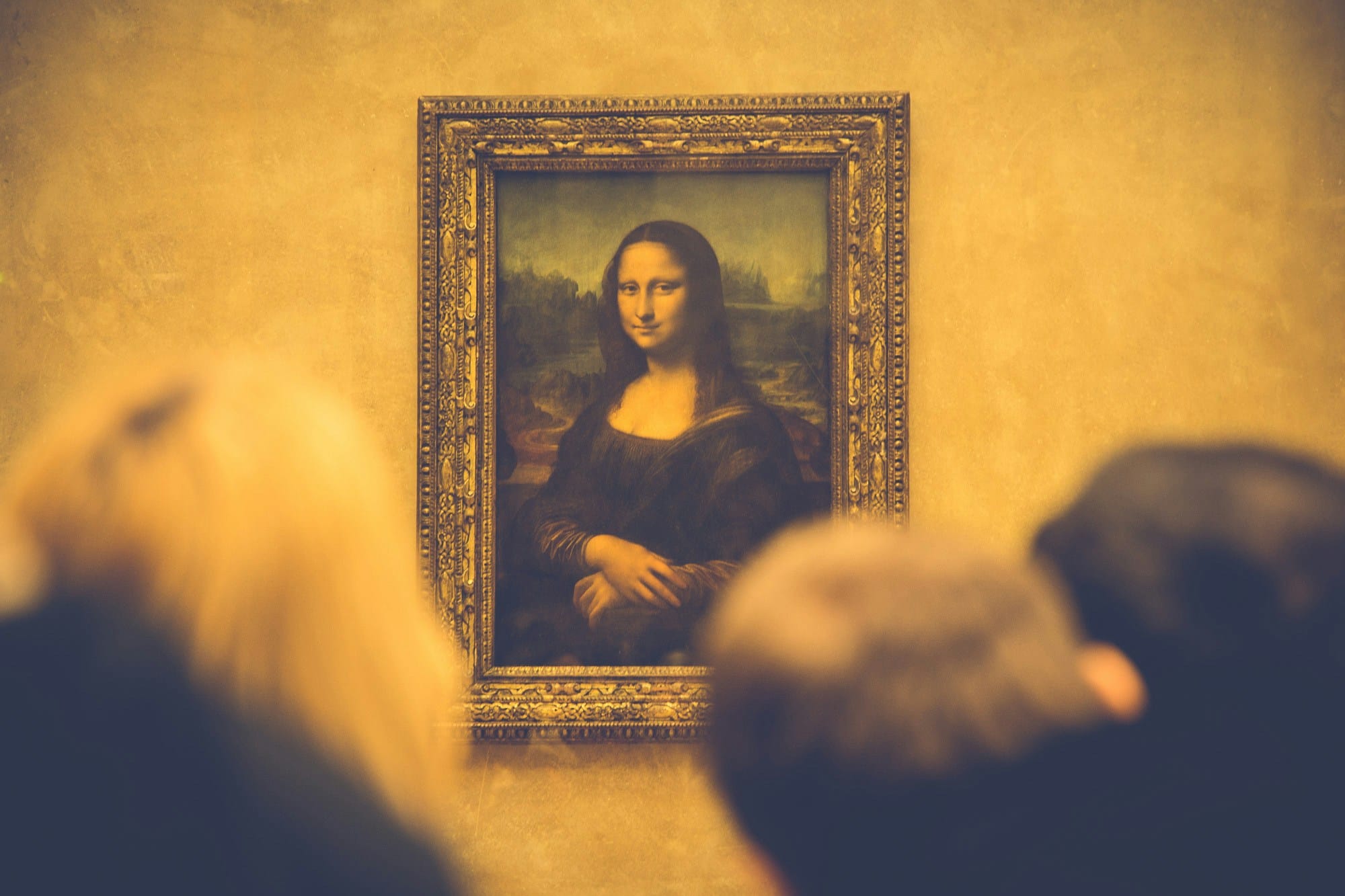Ciao a tutti e benvenuti alla nuova puntata del podcast “The Italian Lesson”! Oggi possiamo imparare l’italiano attraverso una puntata in cui parleremo di uno dei più grandi geni della storia italiana: Leonardo Da Vinci…il quale non fu solo un pittore rinascimentale, ma anche uno scienziato e inventore visionario. Scopriremo insieme le sue opere più celebri, le sue scoperte scientifiche e alcune curiosità che sicuramente vi sorprenderanno. Ne parleremo ovviamente in maniera molto generica ma comunque interessante. Volevo ricordarvi inoltre che questo episodio è pensato per chi ha già una base intermedia di italiano. Chi vi sta parlando è un insegnante di italiano madrelingua e tutte le parole vengono pronunciate esattamente come le pronuncerebbe un italiano
INCOMINCIAMO
Leonardo Da Vinci nacque il 15 aprile 1452 a Vinci, nel paesino di Vinci, in Toscana. Figlio di un notaio, da giovane mostrò un talento eccezionale per l’arte e la scienza. Iniziò la sua formazione artistica come apprendista nella bottega di Andrea del Verrocchio a Firenze, dove sviluppò le sue abilità come pittore e scultore.
Uno dei suoi primi capolavori è stato il “Battesimo di Cristo”, dipinto insieme al suo maestro Verrocchio. La sua carriera artistica lo portò a creare opere iconiche come “La Gioconda” o “Monna Lisa”, nota per il suo sorriso enigmatico e la tecnica sfumata che caratterizza il suo stile unico.
Ma Leonardo non fu solo un artista. La sua curiosità e la sua mente poliedrica lo portarono a interessarsi anche alla scienza e all’ingegneria. Studiò anatomia umana dissezionando cadaveri, contribuendo così alla comprensione dell’anatomia nel Rinascimento. I suoi disegni dettagliati del corpo umano sono ancora oggi studiati e ammirati per la loro precisione e bellezza artistica.
Tra le sue invenzioni più celebri si trovano macchine volanti, carri armati e progetti per canalizzare fiumi e costruire ponti. Molte di queste idee erano tanto avanti nel tempo che solo secoli dopo furono realizzate e apprezzate per la loro ingegnosità.
Il “Codice Atlantico” rappresenta uno dei suoi manoscritti più importanti, contenente schizzi, diagrammi e appunti su una vasta gamma di argomenti, dall’ingegneria alla botanica. Questi documenti testimoniano la sua mente fervida e la sua costante ricerca di conoscenza e innovazione.
Leonardo da Vinci morì il 2 maggio 1519 in Francia, lasciando un’eredità che va oltre i confini temporali e geografici. Il suo impatto sulla cultura occidentale continua a essere studiato e celebrato ancora oggi, rendendolo uno dei personaggi più influenti e ammirati della storia umana.
Alcune curiosità su Leonardo Da Vinci…Forse non tutti sanno che Leonardo da Vinci non solo eccelleva nelle arti e nelle scienze, ma era anche un appassionato di botanica. Studiò e disegnò accuratamente diverse specie di piante e fiori, documentando dettagliatamente la loro struttura e funzione.
Un aspetto meno conosciuto di Leonardo è la sua passione per la musica. Era un abile suonatore di liuto e costruì anche alcuni strumenti musicali, dimostrando la sua versatilità creativa.
Leonardo è famoso anche per aver creato il “Cenacolo Vinciano”, o “Ultima Cena”, un affresco situato nel convento di Santa Maria delle Grazie a Milano. Quest’opera è celebre non solo per la sua bellezza artistica, ma anche per la sua composizione innovativa ed emotiva, che cattura il momento drammatico dell’ultima cena di Gesù con i suoi discepoli.
E questo e tutto, come detto precedentemente ci siamo divertiti ad accennare alcune delle informazioni più importanti della vita del Genio.
Grazie per averci ascoltato! Se volete approfondire ulteriormente, potete trovare il testo in inglese e italiano di questo episodio sulla nostra pagina web come sempre. Ci vediamo al prossimo episodio di The Italian Lesson! Ciao da Daniele
Hello everyone and welcome to the new episode of the podcast “The Italian Lesson”! Today we can learn Italian through an episode where we will talk about one of the greatest geniuses in Italian history: Leonardo Da Vinci. He was not just a Renaissance painter but also a visionary scientist and inventor. We will discover together his most famous works, his scientific discoveries, and some curiosities that will surely surprise you. We will, of course, talk about it in a very general but still interesting way. I also wanted to remind you that this episode is intended for those who already have an intermediate level of Italian. Who is speaking to you is a native Italian teacher, and all the words are pronounced exactly as an Italian would pronounce them.
Let’s start.
Leonardo Da Vinci was born on April 15, 1452, in Vinci, a small town in Tuscany. The son of a notary, he showed exceptional talent in art and science at a young age. He began his artistic training as an apprentice in the workshop of Andrea del Verrocchio in Florence, where he developed his skills as a painter and sculptor.
One of his early masterpieces was the “Baptism of Christ,” painted together with his master Verrocchio. His artistic career led him to create iconic works such as “La Gioconda” or “Mona Lisa,” known for her enigmatic smile and the sfumato technique that characterizes his unique style.
But Leonardo was not just an artist. His curiosity and multifaceted mind led him to be interested in science and engineering as well. He studied human anatomy by dissecting cadavers, thus contributing to the understanding of anatomy during the Renaissance. His detailed drawings of the human body are still studied and admired today for their precision and artistic beauty.
Among his most famous inventions are flying machines, tanks, and projects for canalizing rivers and building bridges. Many of these ideas were so ahead of their time that they were only realized and appreciated centuries later for their ingenuity.
The “Codex Atlanticus” represents one of his most important manuscripts, containing sketches, diagrams, and notes on a wide range of topics, from engineering to botany. These documents testify to his fervent mind and constant quest for knowledge and innovation.
Leonardo Da Vinci died on May 2, 1519, in France, leaving a legacy that transcends temporal and geographical boundaries. His impact on Western culture continues to be studied and celebrated today, making him one of the most influential and admired figures in human history.
Some curiosities about Leonardo Da Vinci… Perhaps not everyone knows that Leonardo was not only excellent in the arts and sciences, but he was also passionate about botany. He carefully studied and drew various species of plants and flowers, documenting their structure and function in detail.
A lesser-known aspect of Leonardo is his passion for music. He was a skilled lute player and also built some musical instruments, demonstrating his creative versatility.
Leonardo is also famous for creating the “Cenacolo Vinciano,” or “The Last Supper,” a fresco located in the convent of Santa Maria delle Grazie in Milan. This work is famous not only for its artistic beauty but also for its innovative and emotional composition, capturing the dramatic moment of Jesus’ last supper with his disciples.
And that’s all. As previously mentioned, we enjoyed touching on some of the most important information about the life of the genius.
Thank you for listening! If you want to delve deeper, you can find the text in English and Italian of this episode on our website as always. See you in the next episode of The Italian Lesson! Goodbye from Daniele.

